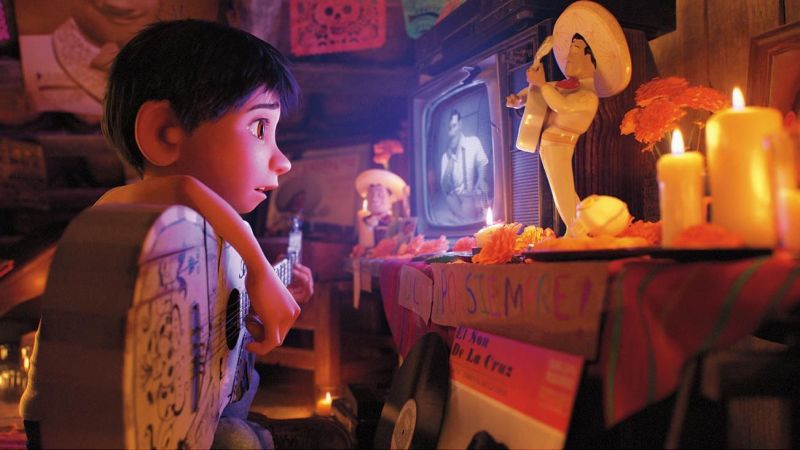Feliz Día de los Muertos! To celebrate, Jorge looks at how the script for Disney’s “Coco” mixes two languages the same way the movie interconnects cultures.

I’ve written a couple of pieces in this site before about Coco. It was an extremely intimate and touching experience to be able to see my native culture represented to accurately and lovingly. It is a movie that perfectly captures the spirit of Mexicanism, of our fragile and ever-present relationship with death, family, and tradition.
I saw the movie twice in theaters: once in its original English, and once in its Spanish dub. While I consider the dub to be a better version (but that perhaps has to do with the way I’ve always experienced animated films), the English one made me consider a new aspect of the film: the way it handled Spanish. It’s a movie explicitly set in a different country; one where a different language is spoken (unlike say, Brave). How can the script incorporate this essential cultural element without making it seem unauthentic? It turns out, they do it muy bien.
Coco
Written by: Adrian Molina & Matthew Aldrich
[You can read the full script here.]
Adrian Molina (no relationship to me, sadly) and Matthew Aldrich understand the importance of language in this story from the start; of the meaning that words carry on its original tongue. Instead of compromising or making the script easier to read, they keep words intact when they have no real English translation. That’s how we get “papel picado” and “ofrenda” and “mariachi…”
However, there are also words that do have an English equivalent, but that translating them would make them lose their impact or meaning. Yes, “mama” and “papa” and “primo” and “abuelita” have their literal English counterparts (mom, dad, cousin, and grandmother), but the Latinidad that the movie so hard aspires to capture would completely be lost if these terms were changed.
And then there are the small details that aren’t necessarily about language, but more cultural details. The “mijos” that Latino kids (and adults) have been called endless times from any family member at any given time. The way older relatives refer to anyone younger in the diminutive (“Our Migueli-ti-ti-ti-to…”). The famous “chancla.” These are the things that make this film so culturally specific and resonant. The script is filled with small things that are hidden from the regular non-Latino viewer.

***

***

***
 Watching the two different versions of the film also made me realize that the original English (perhaps a bit unintentionally) makes a the further point of representing a different kind of Mexicanism than my own: the Mexican-Americanism. The people whose Spanish is peppered through their mostly-English lifestyles. The people who express themselves in one way for most of the time, but still end their sentences with “mijo” and sing ballads in Spanish, and put up their “ofrendas” in November.
Watching the two different versions of the film also made me realize that the original English (perhaps a bit unintentionally) makes a the further point of representing a different kind of Mexicanism than my own: the Mexican-Americanism. The people whose Spanish is peppered through their mostly-English lifestyles. The people who express themselves in one way for most of the time, but still end their sentences with “mijo” and sing ballads in Spanish, and put up their “ofrendas” in November.
I saw myself more in the Spanish-language dub, but I know thousands of other people saw themselves as well more in the original. Coco is only one movie but it somehow manages to represent two different kinds of people underneath the same umbrella. And it all boils down to words. The way the script uses them, and plays with them, and honors them. Much like the dead during the Día de los Muertos.